TWINS OF EVIL: A Decadent (And Subversive) Romp At The Vampire Castle
The 1970's was probably the most exciting time in the history of filmmaking, at least as far as artistic freedom is concerned. The social advances that were fought for during this time were reflected in filmmaking all over the world, with filmmakers embracing their new freedom to pursue more adult content and push the envelope in all manner of interesting directions.The "New Hollywood" movement of the 1970's is the most popular example of this cinematic freedom in action but the shock waves could be felt everywhere, including the world of genre films. Even a commercial enterprise like Hammer Films had to  move with the times. The early 1970's found them bringing in new talent, both producers and directors, to bring a fresh, challenging dimension to their by now familiar gothic themes. Twins Of Evil is one of the best examples of this trend at Hammer: it has all the heaving bosoms and bloody theatrics you might expect but there's also a subversive quality to the story that reflects the turbulent era it was produced in.Twins Of Evil begins with Gustav (Peter Cushing), a dour and pious religious man, leading his brotherhood of followers in burning a peasant woman at the stake for suspicion of witchcraft and involvement in a series of blood-draining murders in the area. It's obvious she's innocent but Gustav and his men kill her while praying for her soul. However, the strange murders continue, even as Gustav and his men bring more peasant women they find "suspicious" to fiery salvation. The only person he
move with the times. The early 1970's found them bringing in new talent, both producers and directors, to bring a fresh, challenging dimension to their by now familiar gothic themes. Twins Of Evil is one of the best examples of this trend at Hammer: it has all the heaving bosoms and bloody theatrics you might expect but there's also a subversive quality to the story that reflects the turbulent era it was produced in.Twins Of Evil begins with Gustav (Peter Cushing), a dour and pious religious man, leading his brotherhood of followers in burning a peasant woman at the stake for suspicion of witchcraft and involvement in a series of blood-draining murders in the area. It's obvious she's innocent but Gustav and his men kill her while praying for her soul. However, the strange murders continue, even as Gustav and his men bring more peasant women they find "suspicious" to fiery salvation. The only person he 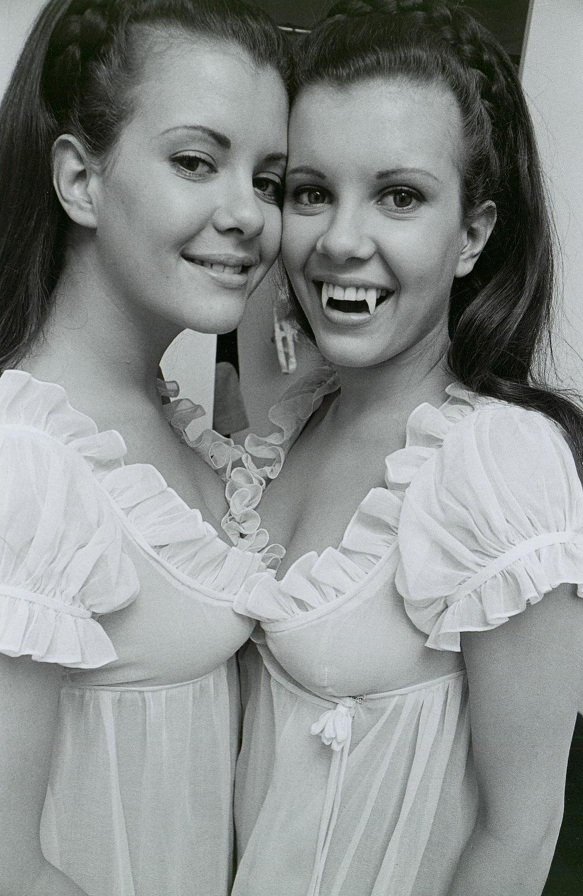 can't punish in the area is Count Karnstein (Damien Smith), a debauched nobleman who flaunts his irreverence and his protection by the royals at every chance.In short, this little village is a pressure cooker of repression and temptation - and it's about to blow wide open for two reasons. The first is the arrival of Gustav's sexy twin nieces, Frieda and Maria (Playboy Playmates Madelaine and Mary Collinson). They provide newfound temptation to Count Karnstein and Frieda is devilish enough in temperament to take him up on his innuendo. To make matters worse, Karnstein has been trying to make a connection with the dark side and succeeds in becoming a vampire for his troubles. The only hope for the rest of the town lies with Anton (David Warbeck), a t
can't punish in the area is Count Karnstein (Damien Smith), a debauched nobleman who flaunts his irreverence and his protection by the royals at every chance.In short, this little village is a pressure cooker of repression and temptation - and it's about to blow wide open for two reasons. The first is the arrival of Gustav's sexy twin nieces, Frieda and Maria (Playboy Playmates Madelaine and Mary Collinson). They provide newfound temptation to Count Karnstein and Frieda is devilish enough in temperament to take him up on his innuendo. To make matters worse, Karnstein has been trying to make a connection with the dark side and succeeds in becoming a vampire for his troubles. The only hope for the rest of the town lies with Anton (David Warbeck), a t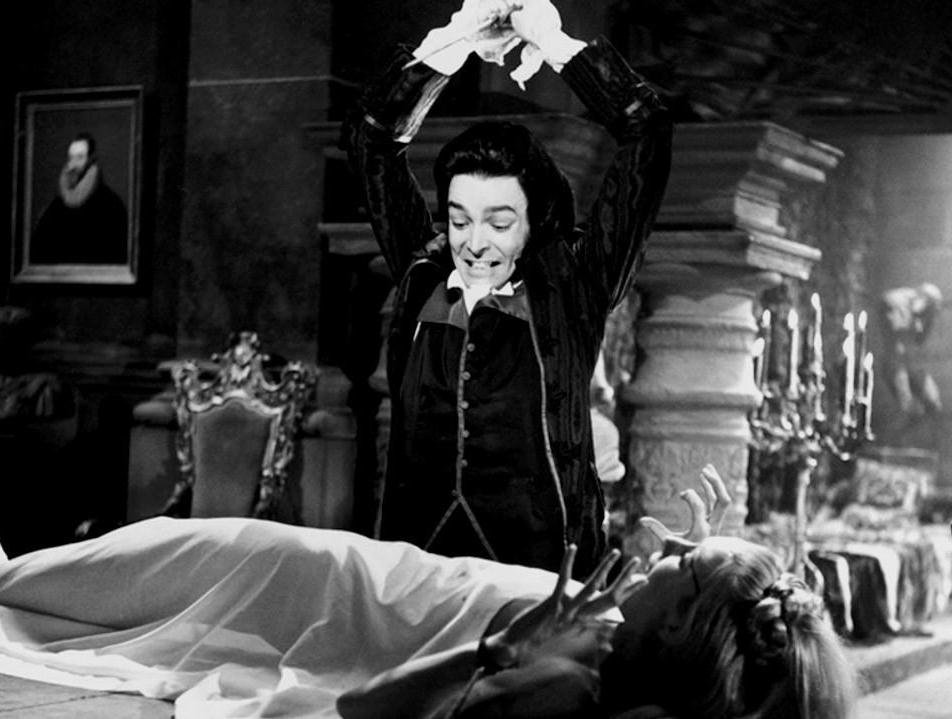 eacher well-versed in the lore of the dark arts - but will he be able to overcome Karnstein and the brimstone-fueled violence of Gustav's brotherhood?The end result is as overstuffed as it sounds, but gloriously so: Twins Of Evil is the kind of gothic horror potboiler where all the elements fall into place beautifully and deliver a string of shock-pulp delights. The script was penned by Tudor Gates, who penned the other Hammer erotic blood
eacher well-versed in the lore of the dark arts - but will he be able to overcome Karnstein and the brimstone-fueled violence of Gustav's brotherhood?The end result is as overstuffed as it sounds, but gloriously so: Twins Of Evil is the kind of gothic horror potboiler where all the elements fall into place beautifully and deliver a string of shock-pulp delights. The script was penned by Tudor Gates, who penned the other Hammer erotic blood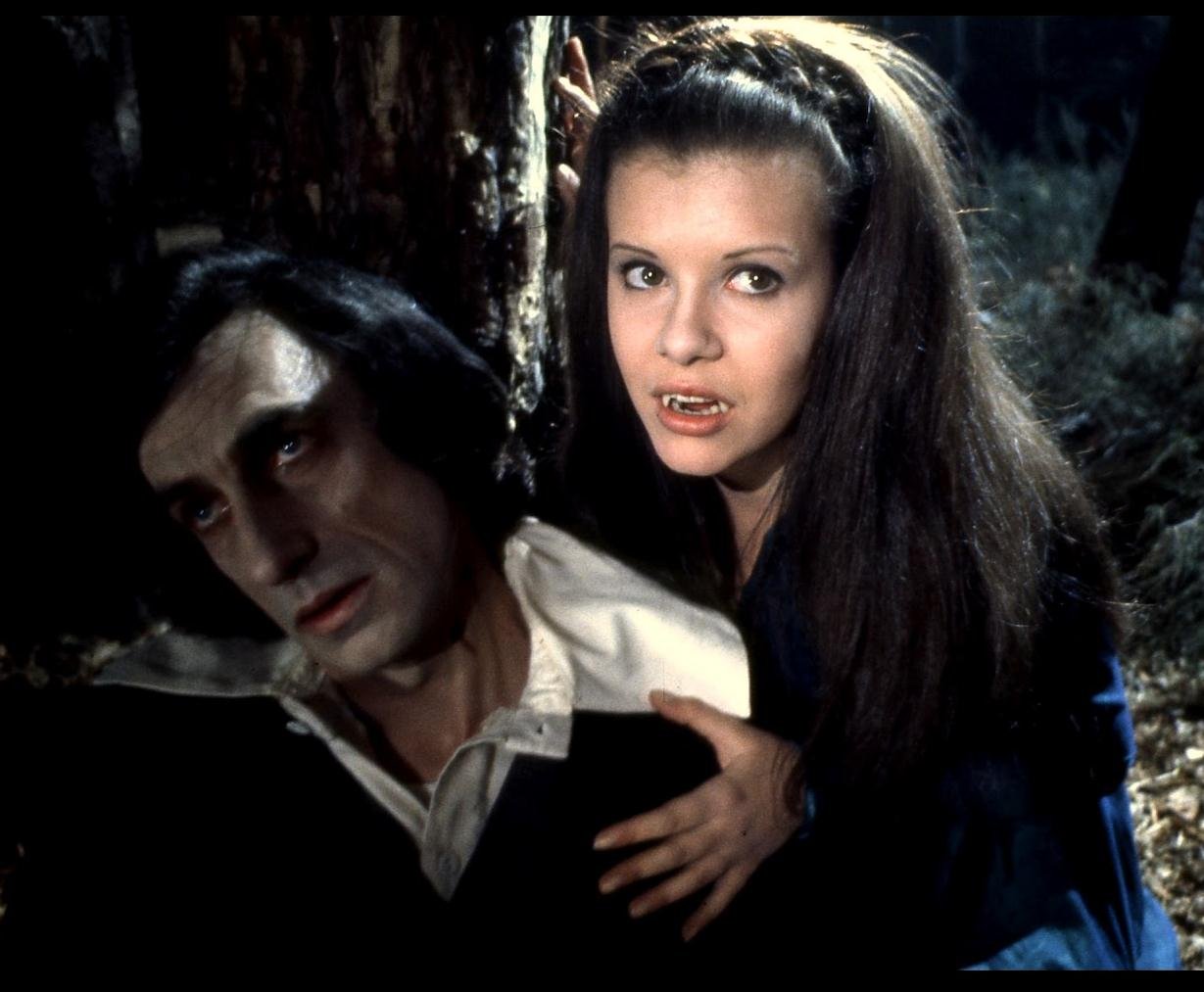 sucker items The Vampire Lovers and Lust for A Vampire, and he brings a similar mixture of gothic thrills and cheesecake to the table here. It's got a camp edge to it - for example, there's some hilariously unsubtle phallic imagery during a seduction sequence and a scene with a mute servant miming a series of dangers to Karnstein that is like a gag from Young Frankenstein - but it also weaves a variety of subplots with great skill. It's also worth noting that for a film with such an ensemble of characters, the script manages to give each of the major players a distinct, compelling identity.
sucker items The Vampire Lovers and Lust for A Vampire, and he brings a similar mixture of gothic thrills and cheesecake to the table here. It's got a camp edge to it - for example, there's some hilariously unsubtle phallic imagery during a seduction sequence and a scene with a mute servant miming a series of dangers to Karnstein that is like a gag from Young Frankenstein - but it also weaves a variety of subplots with great skill. It's also worth noting that for a film with such an ensemble of characters, the script manages to give each of the major players a distinct, compelling identity.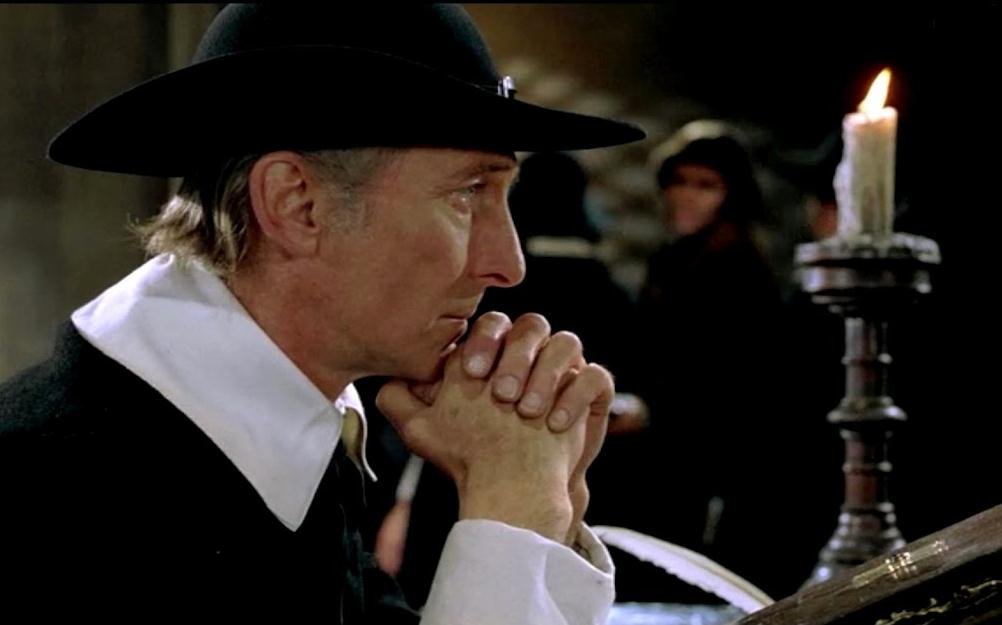 However, the most striking element of Twins Of Evil from a story standpoint is its moral ambivalence. Count Karnstein is as immoral as you might expect but Gustav, who should be the hero, is just as bad because he targets the wrong "sinners" due to his dogma-induced blindness to what evil actually is. As a result, he racks up as big a body count of innocents as the Count does! Thus
However, the most striking element of Twins Of Evil from a story standpoint is its moral ambivalence. Count Karnstein is as immoral as you might expect but Gustav, who should be the hero, is just as bad because he targets the wrong "sinners" due to his dogma-induced blindness to what evil actually is. As a result, he racks up as big a body count of innocents as the Count does! Thus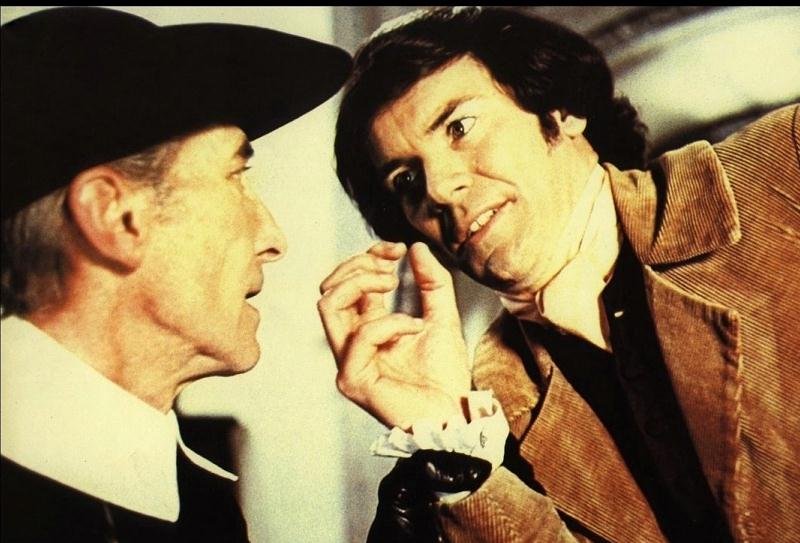 it falls to Anton to be hero, mainly because he's the only who can be sensible (tellingly, he is a proponent of education over dogma or wealthy decadence). Most everyone else in the story ends up a victim because they live in a society where you can't question authority. Those who do have authority are either corrupt or misguided. These themes are pretty heady stuff for what is supposed to be a Hammer programmer - and its questioning of religion puts in a similar camp with another 1971 release, Ken Russell's The Devils.
it falls to Anton to be hero, mainly because he's the only who can be sensible (tellingly, he is a proponent of education over dogma or wealthy decadence). Most everyone else in the story ends up a victim because they live in a society where you can't question authority. Those who do have authority are either corrupt or misguided. These themes are pretty heady stuff for what is supposed to be a Hammer programmer - and its questioning of religion puts in a similar camp with another 1971 release, Ken Russell's The Devils.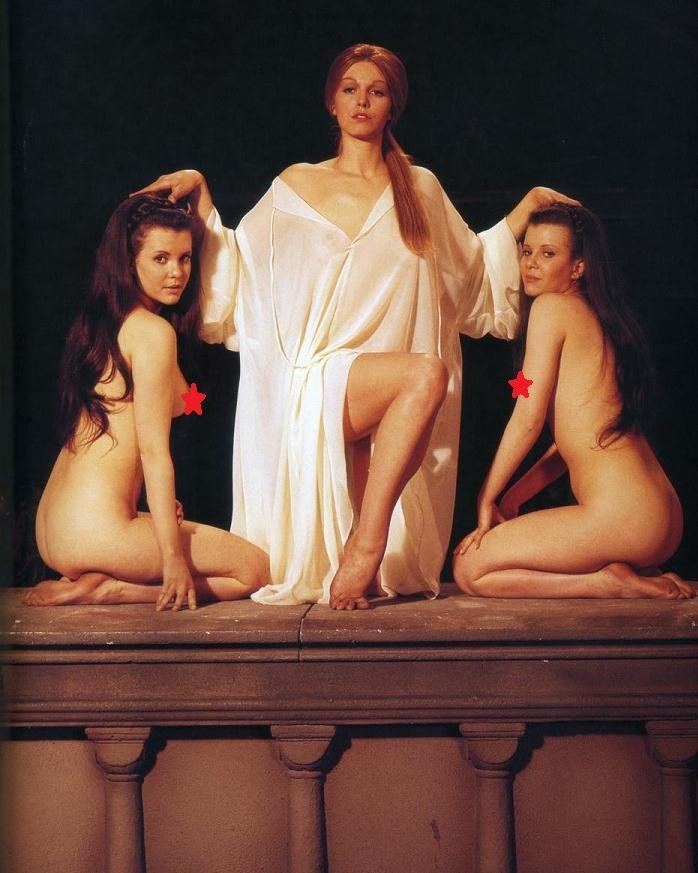 Twins Of Evil gets away with this blend of pulp and subversive themes because it is directed with dazzling style and pace by John Hough. He is an underrated director whose c.v. includes a diverse array of '70s gems (Legend Of Hell House, Dirty Mary Crazy Larry, Escape To Witch Mountain) and he brings a kinetic, visuals-driven approach to the material here. Whether he's dealing with a witch burning, a vampire attack or just a heated dialogue exchange, Hough brings a tremendous sense of coiled energy to the film that provides the fuel for its engine. His dynamic style is aided nicely by excellent cinematography from Dick Bush, who gives the visuals an overripe, velvety look, and a classic "blood and thunder" musical score from Harry Robinson that prods the film along with martial drumbeats and blaring horn fanfares.The final piece of the puzzle is the cast, which is packed with memorable turns. Cushing gives one of his all-time best performances as Gustav, bringing his famous cool intensity to the fore to create an anti-hero who is terrifying and tormented by turns. Smit
Twins Of Evil gets away with this blend of pulp and subversive themes because it is directed with dazzling style and pace by John Hough. He is an underrated director whose c.v. includes a diverse array of '70s gems (Legend Of Hell House, Dirty Mary Crazy Larry, Escape To Witch Mountain) and he brings a kinetic, visuals-driven approach to the material here. Whether he's dealing with a witch burning, a vampire attack or just a heated dialogue exchange, Hough brings a tremendous sense of coiled energy to the film that provides the fuel for its engine. His dynamic style is aided nicely by excellent cinematography from Dick Bush, who gives the visuals an overripe, velvety look, and a classic "blood and thunder" musical score from Harry Robinson that prods the film along with martial drumbeats and blaring horn fanfares.The final piece of the puzzle is the cast, which is packed with memorable turns. Cushing gives one of his all-time best performances as Gustav, bringing his famous cool intensity to the fore to create an anti-hero who is terrifying and tormented by turns. Smit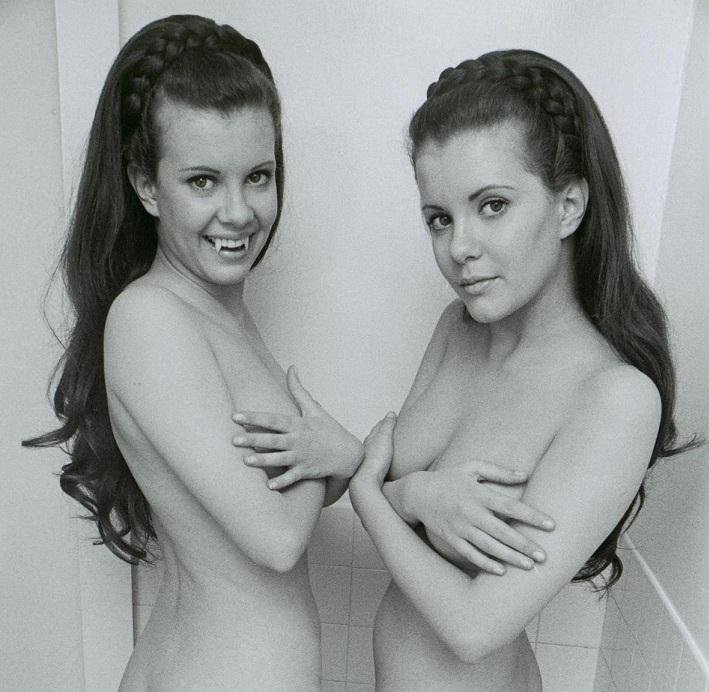 h makes a believably debauched count and Warbeck, several years before his stardom in Italian genre flicks, delivers a likeably grounded turn as the film's audience identification figure. By comparison, the Collinson Twins are mainly used for visually symbolic purposes: despite being noticeably dubbed, their basic but solid work fits their purpose in the film - and Madelaine Collinson brings some real energy to her work as the "bad girl" of the duo. Horror buffs should also keep their eyes peeled for a brief but fun character turn from Euro-cult icon Dennis Price as the Count's procurer of wenches.Simply put, Twins Of Evil retains its power today because it offers the right mixture of extravagant Hammer Films style combined with daring ideas under the surface that retain their potency. It's the kind of movie that gives gothic cheap thrills a good name.
h makes a believably debauched count and Warbeck, several years before his stardom in Italian genre flicks, delivers a likeably grounded turn as the film's audience identification figure. By comparison, the Collinson Twins are mainly used for visually symbolic purposes: despite being noticeably dubbed, their basic but solid work fits their purpose in the film - and Madelaine Collinson brings some real energy to her work as the "bad girl" of the duo. Horror buffs should also keep their eyes peeled for a brief but fun character turn from Euro-cult icon Dennis Price as the Count's procurer of wenches.Simply put, Twins Of Evil retains its power today because it offers the right mixture of extravagant Hammer Films style combined with daring ideas under the surface that retain their potency. It's the kind of movie that gives gothic cheap thrills a good name.


